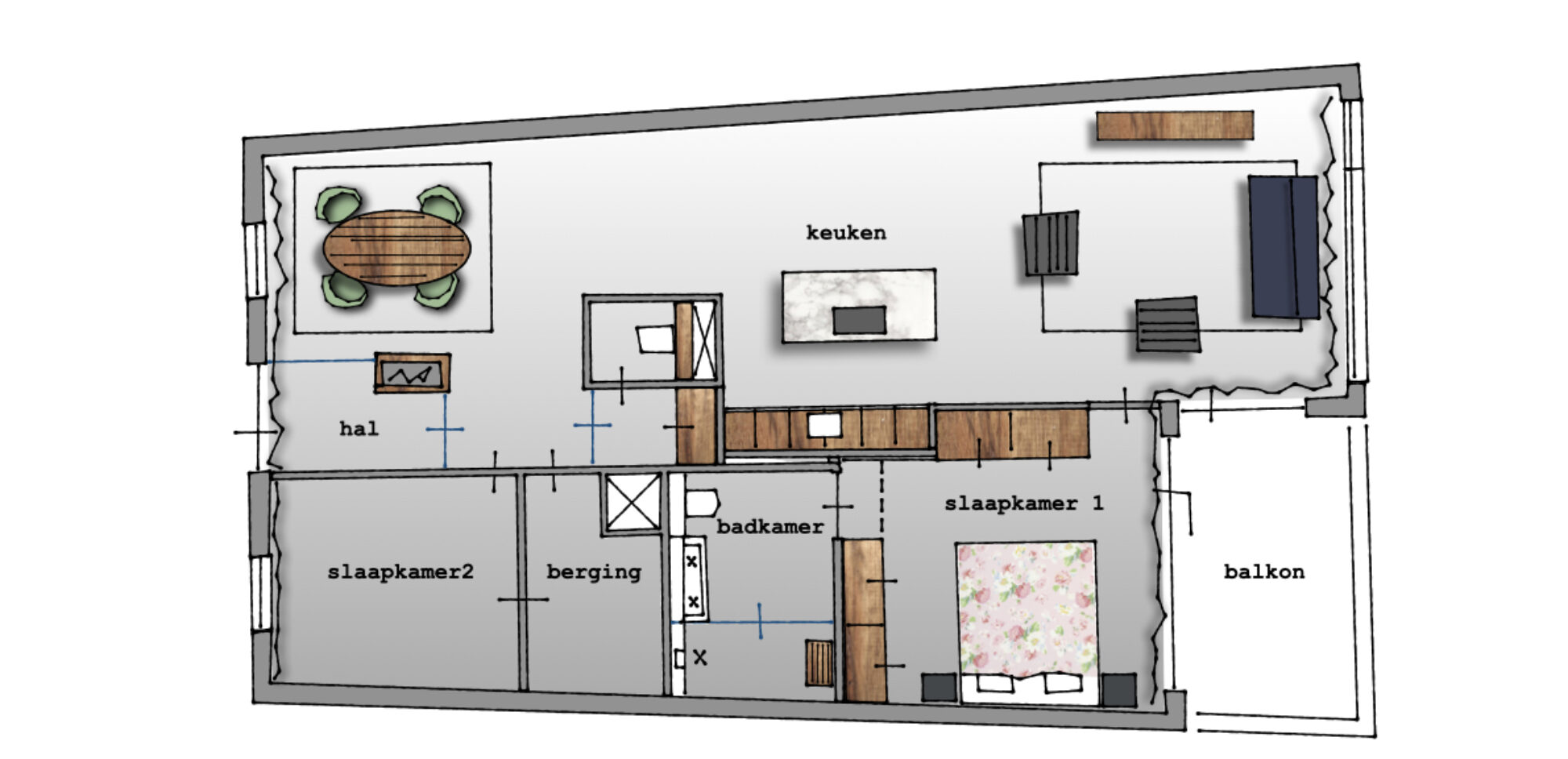Architecture as an emergent property of a Complex Adaptive System (CAS) with self-organizational properties.
Abstract
We are starting to realize that the earth’s capacity is not infinite. Space, air, water, energy and resources are limited. This spurs the need for more sustainable ways of architectural design e.g., by incorporating cyclic processes of low-scaled interrelated actors. Ironically, the increasing global awareness of the importance of sustainability, has led to an ever-increasing number of local development projects. Citizens living in huge-scale housing areas are starting to lose their sense of particularity of place. They are looking for a way to increase self-reliance. Self-reliance increases citizen-initiated building projects and collective private commissioning. As a result, local contractors propel low-scale building activities and resources are retrieved from their close-by neighbourhood. Reduction of global planning induces self-organization with a massive diversity in forms of living spaces as a spin-off.
Nature is not familiar with the concept of waste: one’s output is another’s input. Organisms extract raw materials from their immediate environment and surroundings to construct their body materials and live together in a complex, tight knotted web of interrelated dependencies in which each organism has its own properties and function. The varieties of organismal forms are enormous. Once more, nature acts as a source of inspiration for small-scale, diverse, and cyclic design processes. Biomimicry, for instance, is an emerging field of research that applies natural (biological) principles and solutions into modern techniques and organizational structures.
Apart from showing us a lot of examples of cyclic interrelated processes, nature teaches us how efficient and adaptive biological processes at different scale levels can be: from highly efficient chemical processes in bacteria, to adaptive microstructure of bones in vertebrates, and the climatological properties of termite hills and social behaviour of bees and ant colonies. The well-known Darwinian principle of survival of the fittest postulates that only the most adaptive species survive, forcing species to react and adapt to their environment adequately. However, two more – lesser known – natural mechanisms increase efficiency and adaptivity of biological processes. These do not object the theory of evolution but are acting together in an interwoven way.
In the book On Growth and form, D’Arcy Wentworth Thompson describes the development and transformation of form of organisms. He shows that exoskeletons of algae show remarkable resemblances with crystallized soap bubbles. Soap bubbles reveal their form by decreasing their surface tension. Therefore their form is a result of finding equilibrium in a field of physical forces and form so-called minimal surfaces. Various architects examined these surfaces. In the 1970s and 1980s German architect Frei Otto (known by his Olympic stadium in Munich) studied the architectonical possibilities of these structures. In 2008, PTW architects and Arup engineers used clustered soap bubbles (i.e. Weaire-Phelan structure) as inspiration when constructing the Beijing National Aquatics center. Formfinding includes all the different ways shapes are generated by finding an equilibrium state in some physical force field. Parametrical design is a subset of formfinding. The research in the field of formfinding is propelled by increasing computationpower and rising quality and affordability of 3D printing. This technique makes it possible to produce real physical objects out of virtual models, which can then be studied more thoroughly.
A second natural mechanism that increases adaptivity and efficiency of biological processes are complex adaptive systems (CAS). In the 1990s, scientists studied the behaviour of non-linear systems, developing new scientific vocabulary like order, chaos, emergent properties and complexity. It was found that, despite their complexity, these systems are controlled by a small set of behavioural rules and interactions between relatively naive agents that lack a hardcoded blueprint or global system knowledge. Yet, these overall systems employ an efficient strategy, and follow adaptive behavioural patterns, and shapes. What is more, these emergent properties have a reciprocal influence on the interacting agents, sometimes causing the system to be self-organizing (i.e. autopoiesis). Examples of strategy include ants finding the shortest way to a food source, and the development of learning by machines and animals. Some self-organizing systems show properties of adaptive shapes. For instance termite hills, flocks of birds, fishes, and packs of cyclists. Yet, these typical shapes still are studied poorly by architects, one of the few exceptions being the Hyperbody Department at the Technical University in Delft, led by Kas Oosterhuis.
To bridge this research gap, I’ll describe the basic principles of self-organizing complex adaptive systems (CAS). And finally I’ll explore several complex adaptive systems in depth, and assess whether found properties can be valuable to architectural shapes and design.
